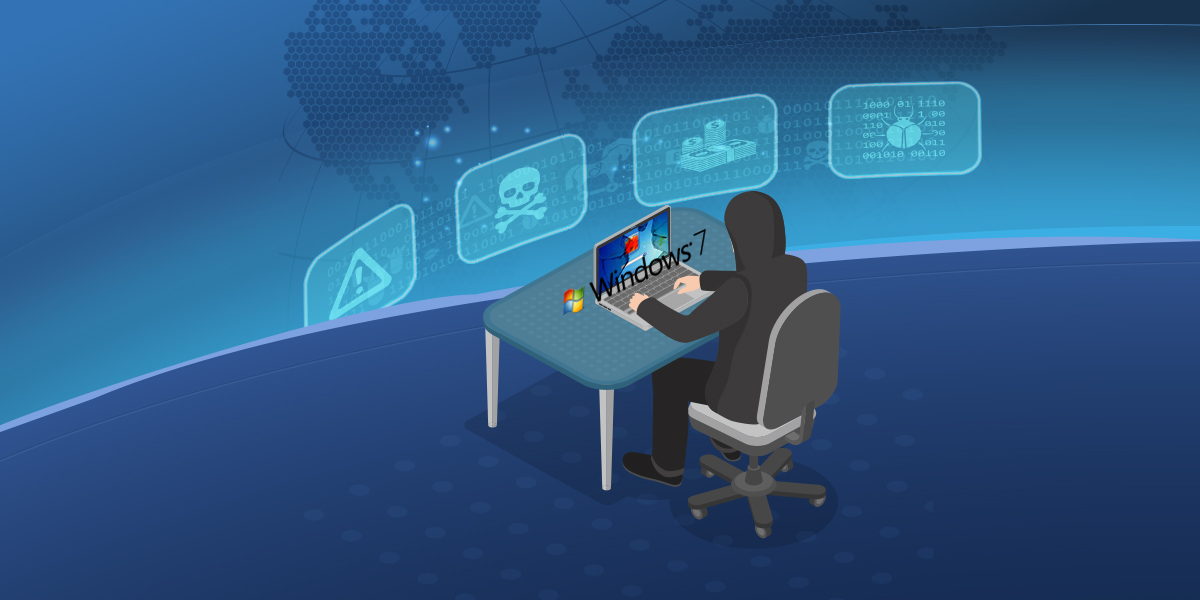People these days want to follow and keep up with the trends. Be it in technology, like owning the latest gadget, being up-to-date with the latest cybersecurity-related topics or be it in going green or being a fashionista and the like; the trend has become a buzzword these days.
However, when it comes to choosing an operating system, many among us don’t seem to give much importance to keeping our OS updated and with the latest trend, thereby putting our devices and the connected peripherals at risk.
In this blog, we would look into our telemetry stats and the multiple risk factors associated with an obsolete/unpatched OS in spite of having up-to-date security and apps on your device.
The Telemetry Factor
Let us now analyze what the telemetry stats that were reported to our K7 Ecosystem Threat Intelligence (K7ETI) tell us about the Infection Rate (IR) for an obsolete/unpatched OS. Infection Rate of an area is defined as the proportion of our active users who encountered at least one cyber threat event which was blocked and reported to our K7ETI.

Figure 1: Graph depicting the IR across different OS
From our data, we gleaned that all the existing operating systems were significantly vulnerable to threats, as can be seen from the Infection Rate chart. However, it is also to be noted that Windows 10 has been the least susceptible to threats compared to other typical Windows OS. Regardless of OS, to protect ourselves, we need to apply the latest security patches that are made available by Microsoft for each Windows version.

Figure 2: Proportion of our active user base who are using a particular flavor of Windows
From Figure 2, we can see that almost 60% of our active users are still using Windows 7. This percentage is significant considering the fact that Microsoft has officially withdrawn support for the same. For a variety of reasons, this enormous chunk of users still prefers using obsolete operating system versions such as Windows 7. A significant number of users even use Windows XP. Microsoft has already stopped releasing updates and patches for these Windows versions and does not offer any user support even in case of an emergency.
However, we at K7 always care for our customers and still provide full support for users who have not yet migrated from Windows 7, for a few more years, and we still support you on Windows XP too. However, we always recommend our users to upgrade their operating system at the earliest to stay fully protected.
Risks of an Obsolete/Unpatched OS
Using an outdated operating system does bring many problems for users, including putting them on the cybercriminals prey list. The vulnerabilities that exist on an unpatched operating system are easy targets for the threat actors to infiltrate into the victims’ device, and in such a scenario, even having an updated security suite might not be enough to protect the victim as the effectiveness of the same might be hampered.
Listed below are some of the things that the threat actors can use your device for the following, amongst other dangers:
- As a backdoor to the device and the rest of the devices in your network
- To encrypt your data by dropping ransomware
- To breach your data
These threats could impact your devices even if your apps and security products are up-to-date, because the threat actors could exploit the existing operating system vulnerabilities at scale.
In order to stay safe from the malicious actors, users are advised to upgrade their operating system whenever available and possible and keep their security products such as K7 Total Security and apps up-to-date as a protective measure against threats in the wild.











